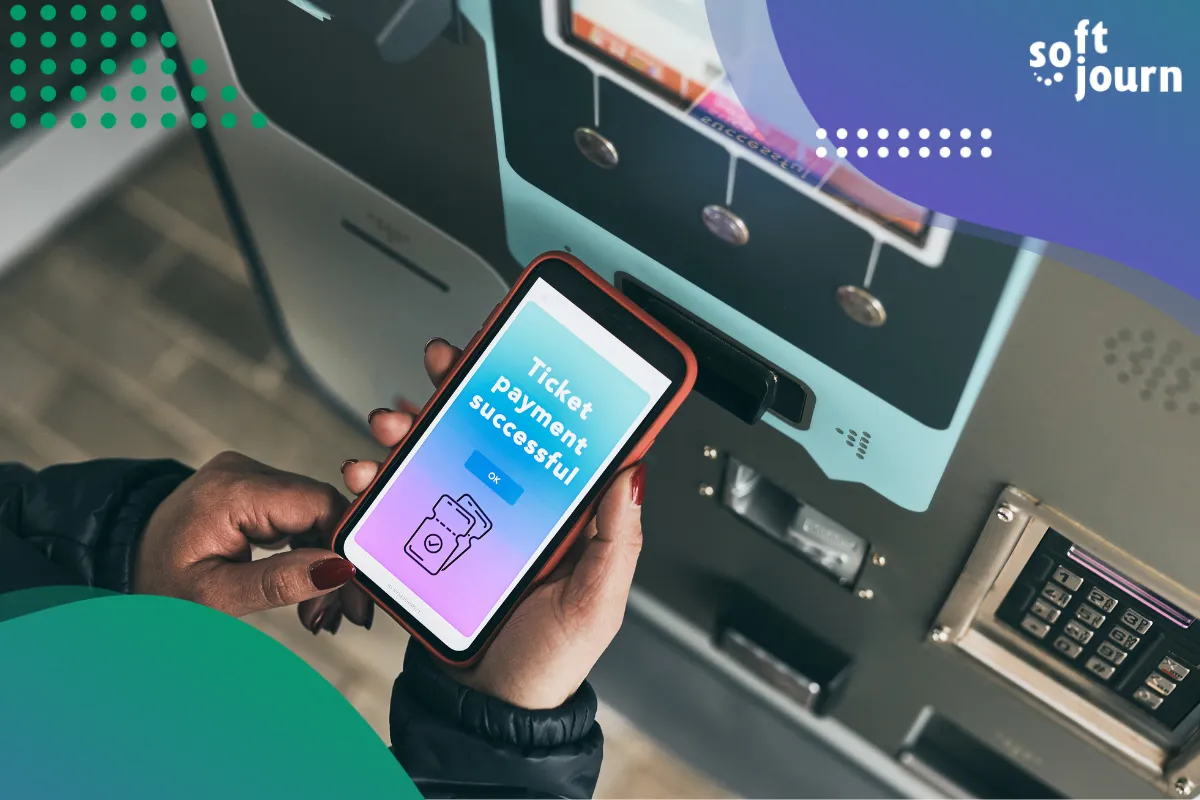Our mobile phones continue to make our lives easier, as tech companies further expand our devices’ abilities. And that doesn’t even take into account the number of wearables and other smart devices that are causing us to rethink how we perform daily tasks.
We are always looking to understand how technology can be applied to our various areas of expertise. We've seen contactless payments take the financial sector by storm, so it's not surprising that contactless technology has also impacted the ticketing industry.
Contactless ticketing—also known as mobile or NFC ticketing—is an obvious choice. As digital tickets have surged in popularity, largely replacing paper tickets, the next logical step was to integrate them into electronic wallets for added convenience and security.
With our deep expertise in the events industry, we understand how NFC and contactless ticketing can benefit not just ticketing platforms, but everyone involved in the event process—from vendors to customers. We'll take a deeper look into the use of contactless technology in ticketing.
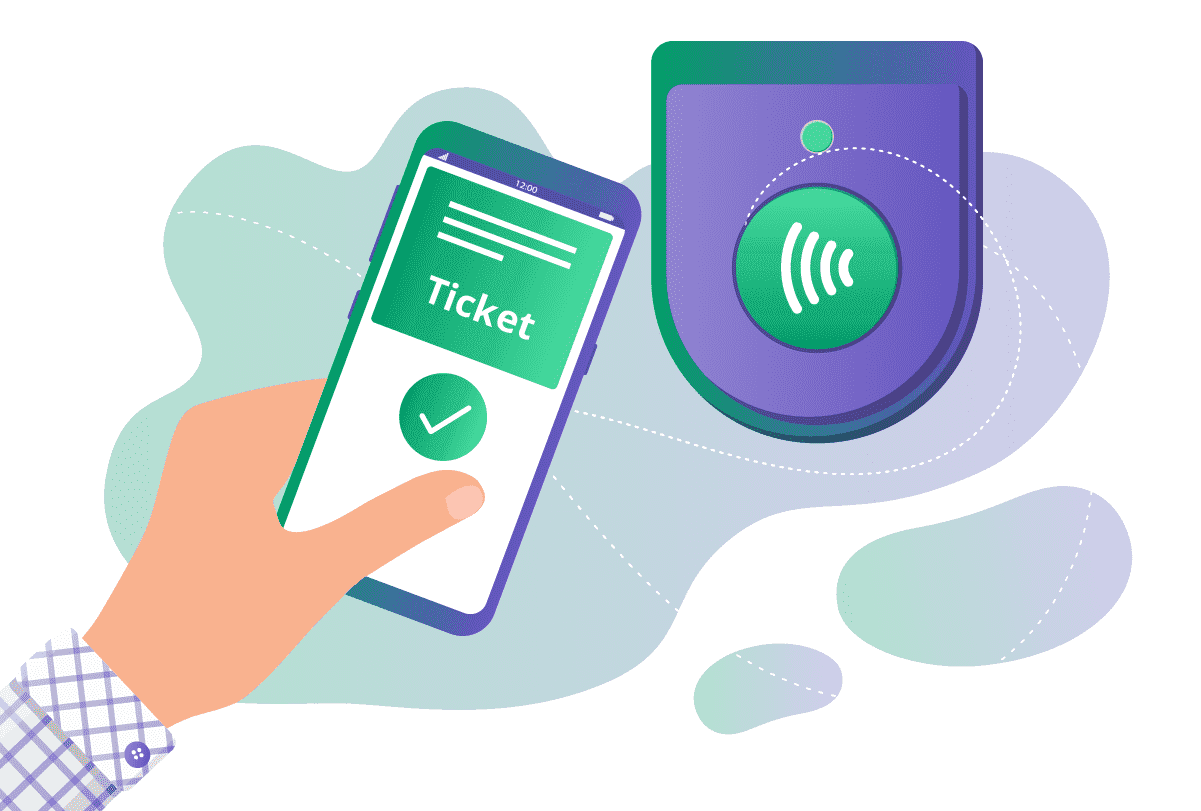
How Does Contactless Ticketing Work?
Contactless ticketing makes use of NFC, or near-field communication. NFC enables two devices to communicate wirelessly when they are within a specific distance of one another. NFC is actually a subset of radio-frequency identification or RFID.
RFID technology, which uses radio waves for identification, has been around for decades in applications like grocery item scanning and luggage tracking at baggage claims.
NFC, on the other hand, powers contactless payments. If you’ve shopped at places like Whole Foods, Walgreens, or Office Depot, you’ve likely seen someone tap their mobile phone to a card reader—this is NFC enabling a transaction without physical contact between devices.
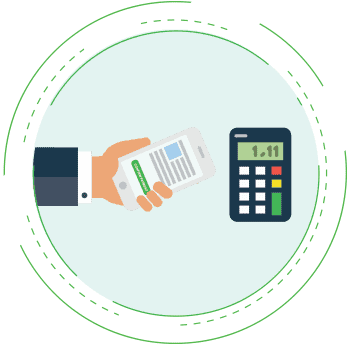
Contactless ticketing works similarly: by storing a ticket in an electronic wallet, patrons can simply hold their mobile device near a reader to check in instantly. It means faster-moving lines and no more fumbling for printed tickets in pockets or bags!
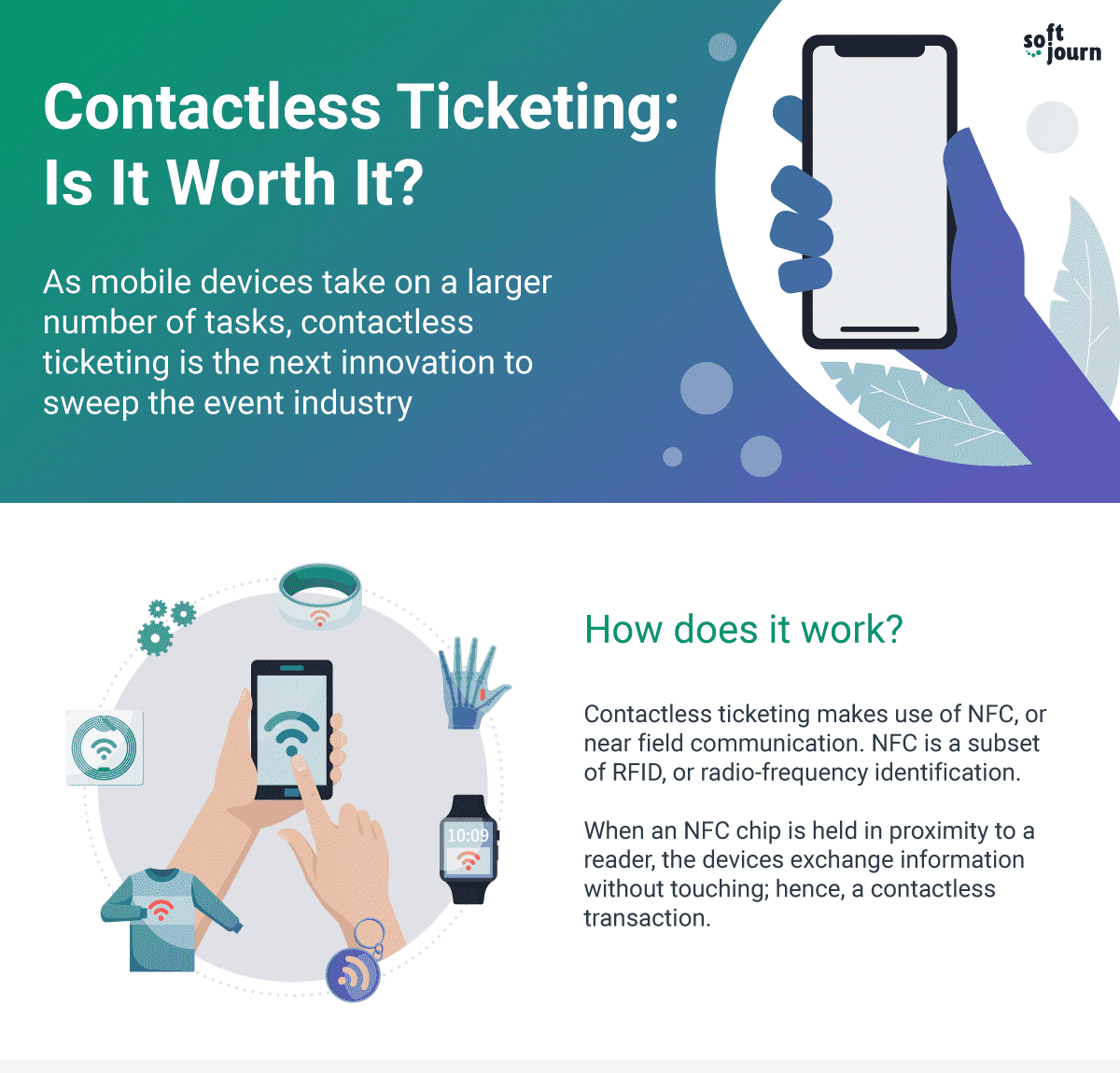
Where is Contactless Ticketing Being Used?
Many industries hosting ticketed events are rapidly adopting contactless ticketing. This market is projected to grow significantly, reaching USD 30.4 billion by 2034, with a CAGR of 13.9%.
As digital ticketing becomes the norm, NFC tickets are increasingly replacing traditional paper tickets across the industry.
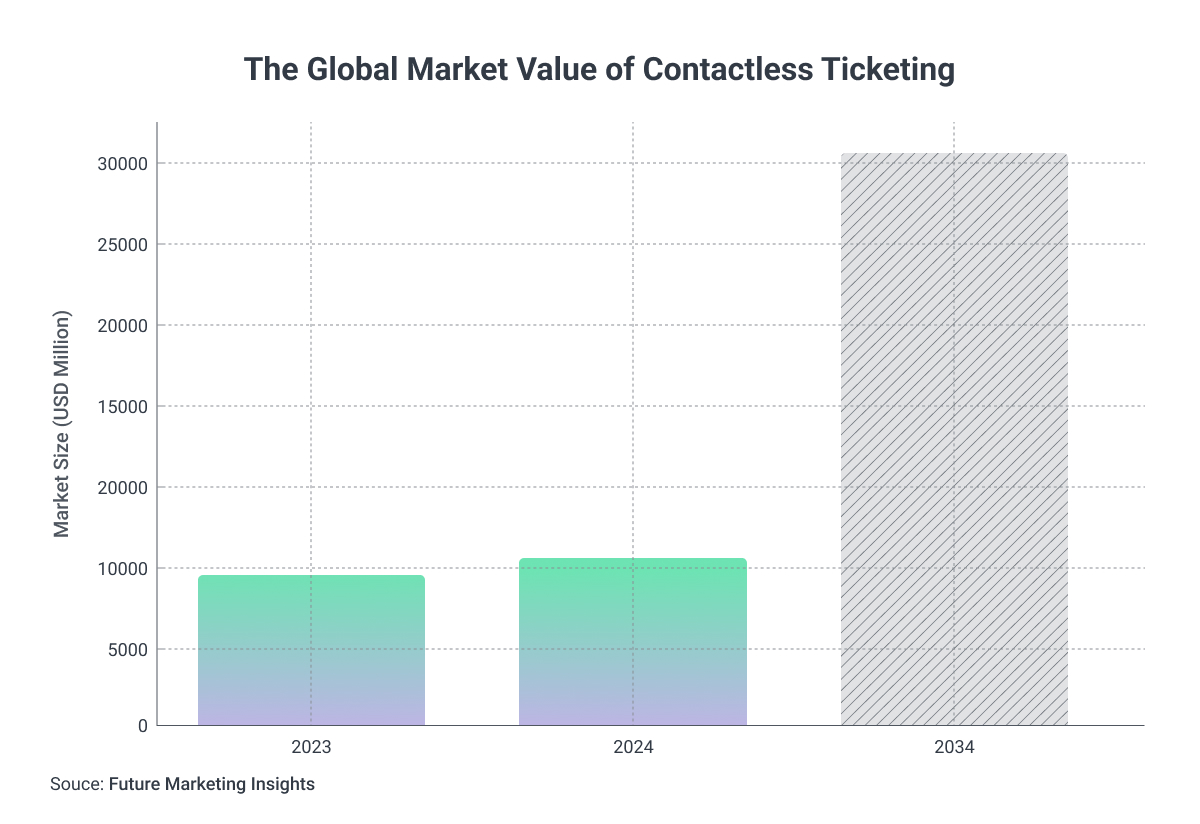
Ticketmaster’s SafeTix, launched in 2019, utilizes NFC technology to create a seamless tap-and-go experience, linking digital tickets to users’ accounts through an encrypted, auto-refreshing barcode that prevents fraudulent screenshots.
In addition to SafeTix, other venues worldwide are embracing contactless ticketing. The Allegiant Stadium in Las Vegas, home to the Las Vegas Raiders, fully adopted contactless ticketing, allowing fans to enter using digital passes loaded into their mobile wallets.
Similarly, SoFi Stadium in Los Angeles, which hosts major events like the Super Bowl, offers contactless entry to streamline crowds and improve fan experience.
Another innovative application is Oveit’s NFC wristbands, linked to attendees’ digital tickets and doubling as electronic wallets. These wristbands streamline entry and allow users to check balances, access perks, and manage credentials, creating a unique and engaging event experience.
In the UK, the Emirates Stadium introduced NFC ticketing for season ticket holders, allowing fans to tap their phones for fast entry and reducing the need for printed tickets. London's O2 Arena also supports contactless ticketing across multiple platforms, enabling fans to enter effortlessly with a simple tap.
In Japan, the Tokyo National Stadium adopted NFC-enabled ticketing for high-profile events, improving security and reducing wait times for major gatherings.
Brazil's Maracanã Stadium, one of the largest stadiums in South America, has integrated NFC ticketing to better accommodate high-capacity events and prevent ticket fraud.
With benefits like reduced queuing, enhanced security, fraud prevention, and real-time data collection, contactless ticketing is quickly becoming the preferred solution for venues and events around the globe.
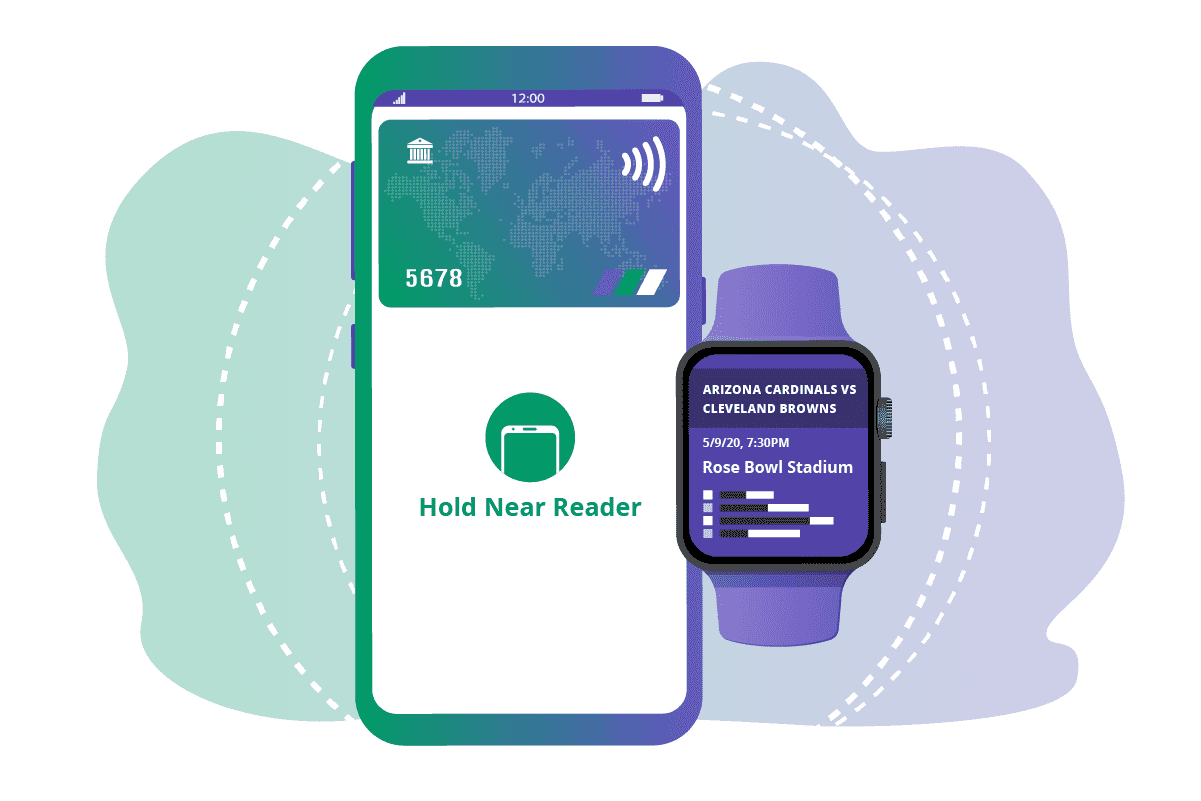
What Are The Benefits of Contactless Ticketing?
- Enhanced Security: Contactless tickets use RFID technology, which requires close proximity between the mobile device and the reader, minimizing the risk of interception. Digital tickets in electronic wallets are further protected by dual chips: one for encrypting and accessing information and an NFC chip for transmitting it. Tokenization (which converts data into a secure, random token) and biometric verification add even more layers of security.
- Quick Recognition: Ticket readers instantly detect mobile devices, allowing rapid access. Mobile applications, such as digital wallets, can be programmed to anticipate a nearby reader and automatically open when within range, enabling faster entry and reducing bottlenecks at event entrances.
- Data Protection: With encryption and tokenization, both user data and ticket information are safeguarded against fraud. This is especially valuable for high-demand events, where fraud risks are elevated due to increased demand from attendees.
- Unique Identification: Each contactless ticket has a unique identifier, allowing vendors to track ticket activity in the secondary market, gather insights on audience demographics, and monitor for potential fraud. This level of scrutiny enhances security and provides valuable data on audience preferences.
- Extended Functionality: Contactless ticketing can enhance the event experience by enabling in-app purchases linked to the ticket. Attendees can add funds or connect their bank accounts to buy food, beverages, or merchandise on-site with ease.
- Greater Reliability: No need to search pockets or scroll through apps to find a barcode. Contactless tickets are ready with a simple tap, making entry smoother and eliminating the risk of misplacing paper tickets.
- Faster Processing Times: Contactless technology works through wallets, bags, and other containers, speeding up queues and ensuring that attendees can enter quickly. Since nothing needs to be swiped or scanned manually, the process is seamless and efficient.
- Reduced Maintenance Costs: Contactless readers have no moving parts, meaning they experience less wear and tear over time. They simply read NFC tags within the correct range, reducing the need for human intervention and minimizing maintenance expenses.
- Improved Health and Safety: Contactless ticketing reduces physical touchpoints, helping to maintain hygiene standards by limiting contact between attendees and staff. This is particularly valuable in large events or high-traffic venues.
- Environmental Benefits: By eliminating paper tickets, contactless ticketing supports sustainability initiatives, reducing waste from paper production and disposal. This eco-friendly approach can also appeal to attendees who prioritize environmental responsibility.
- Real-Time Analytics: Contactless ticketing provides instant data on entry times, crowd flow, and peak attendance, allowing organizers to make real-time decisions, such as opening additional entry points or deploying staff to busy areas.
- Flexible Ticket Management: Contactless tickets can be easily transferred or canceled digitally, offering flexibility for both organizers and attendees. This is especially useful for events with complex ticketing needs, like multi-day festivals or family packages.
- Reduced Counterfeiting Risks: Contactless tickets are difficult to counterfeit compared to printed tickets or traditional barcodes, as they use encrypted information that’s hard to replicate. This reduces revenue loss from fake tickets and bolsters the event’s reputation.
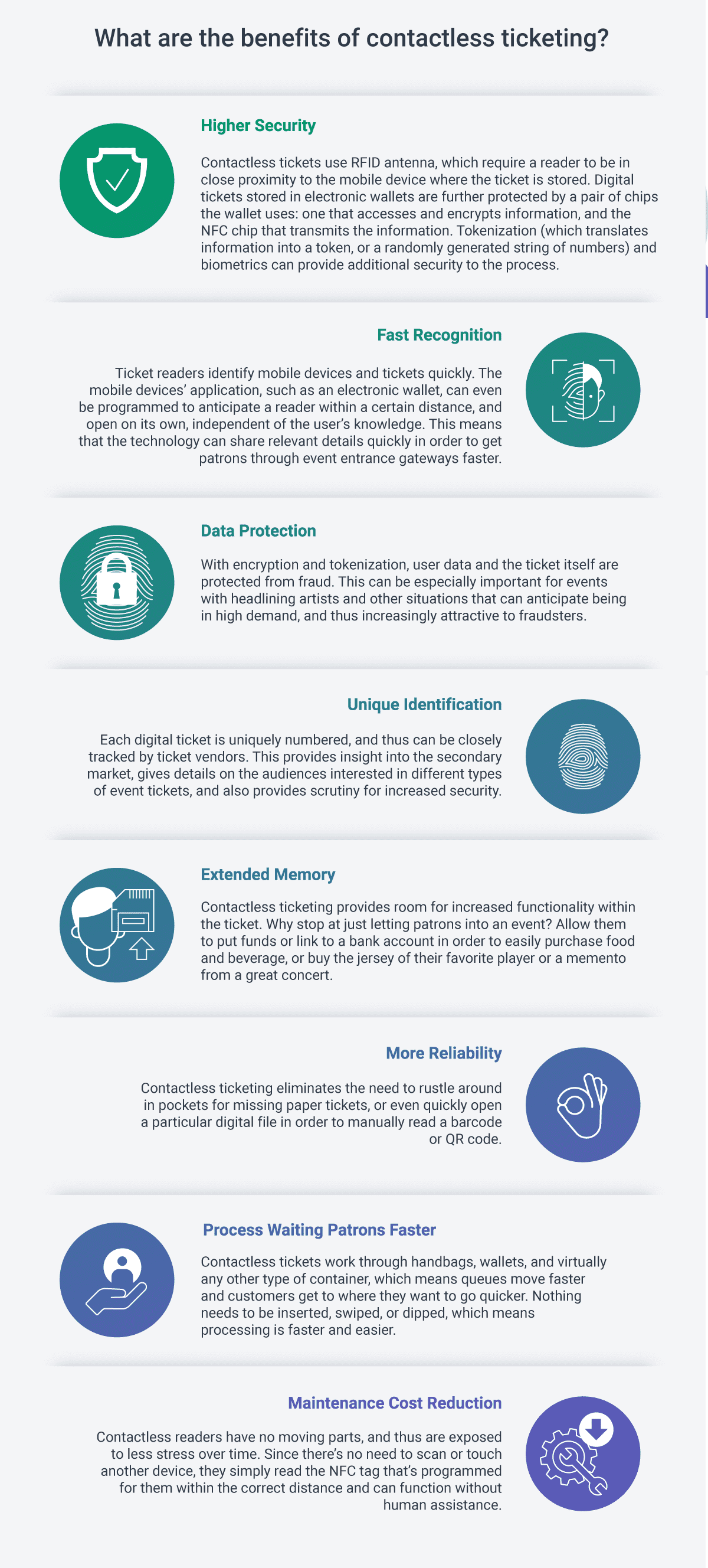
Enhancing the Fan Experience with Contactless Ticketing
Contactless ticketing technology has the potential to greatly improve the overall event experience for fans. One of the key benefits of contactless ticketing is the convenience and ease of use for the fans.
Instead of physically printing tickets or carrying them on their mobile devices, fans can simply tap their contactless-enabled device or card at the gate for entry. This eliminates the need for fans to keep track of physical tickets, reducing the risk of lost or forgotten tickets and making entry into the event smoother and faster.
Another way contactless ticketing can enhance the fan experience is through data and personalization. Contactless tickets can be linked to a fan's account, allowing venues and teams to gather data on the attendance and behavior patterns of patrons.
This data can then be used to personalize the fan experience and offer targeted promotions and incentives. For example, a team can use data from a fan's past attendance and purchasing habits to offer them a personalized package deal for upcoming games, e.g. an upgrade to a VIP seating package or a bundled deal for upcoming games.
Additionally, contactless ticketing allows for real-time updates and notifications, such as gate changes or weather alerts, to be sent directly to the fans. This improves the overall communication and information flow between the venue and the fans.
One particularly exciting enhancement is in-seat ordering. With contactless ticketing, fans can place food and beverage orders from their seats, avoiding lines and ensuring they don’t miss key moments in the game or performance.
Linked digital wallets or NFC wristbands allow fans to seamlessly pay for concessions and have them delivered directly to their seats or ready for pickup at designated locations. This feature adds convenience and boosts the enjoyment of the event, creating a more immersive and engaging experience.
Contactless ticketing technology can enhance the fan experience by providing convenience, data and personalization opportunities, and real-time updates. By implementing this technology, venues, and teams will provide a more seamless event experience for fans.
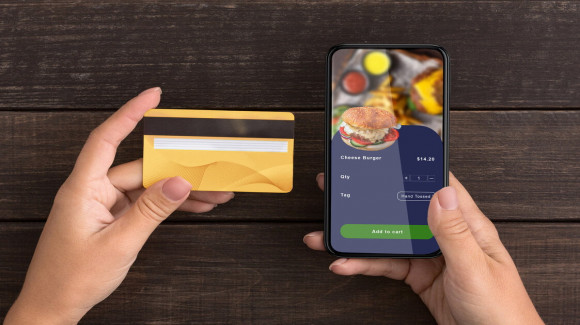
Maximizing Revenue with Contactless Ticketing
Contactless ticketing technology can be used to maximize revenue for venues and teams. One way to do this is through dynamic pricing. With contactless ticketing, venues and teams have the ability to adjust ticket prices in real-time based on demand, allowing them to take advantage of last-minute sales opportunities and increase revenue from high-demand events.
Additionally, contactless ticketing can also help increase revenue by reducing costs associated with traditional ticketing methods. For example, it eliminates the need for physical ticket printing and also reduces the cost of handling cash and credit card transactions.
By utilizing contactless ticketing, not only is there the chance to personalize and boost the experience for each individual fan, but the collected data can be leveraged to identify new upselling and cross-selling opportunities, such as offering merchandise or VIP upgrades during their visit based on their purchase history.
Implementing contactless ticketing can lead to increased revenue for venues and teams by offering dynamic pricing, reduced costs, and additional sales opportunities. By utilizing these benefits, venues and teams can improve their overall financial performance.

Eco-Friendly Ticketing Solutions
NFC ticketing offers a highly sustainable alternative to traditional paper-based ticketing, significantly reducing the environmental impact of events. By shifting to digital NFC passes, the event industry can eliminate the resource-intensive processes of producing, distributing, and disposing of paper tickets.
Traditional ticketing demands large quantities of paper, ink, and energy for printing, along with the transportation emissions associated with delivering physical tickets to venues or customers.
In contrast, NFC technology allows tickets to be securely stored on mobile devices, requiring no physical materials and generating no waste.
This transition to digital ticketing aligns with global sustainability efforts, helping to conserve natural resources and minimize pollution. For event organizers, adopting NFC ticketing not only enhances efficiency and convenience but also demonstrates a commitment to environmental responsibility.
By reducing their ecological footprint, venues and event managers can promote a cleaner, greener approach to event management, appealing to environmentally-conscious attendees and setting a new standard for sustainable practices in the industry.
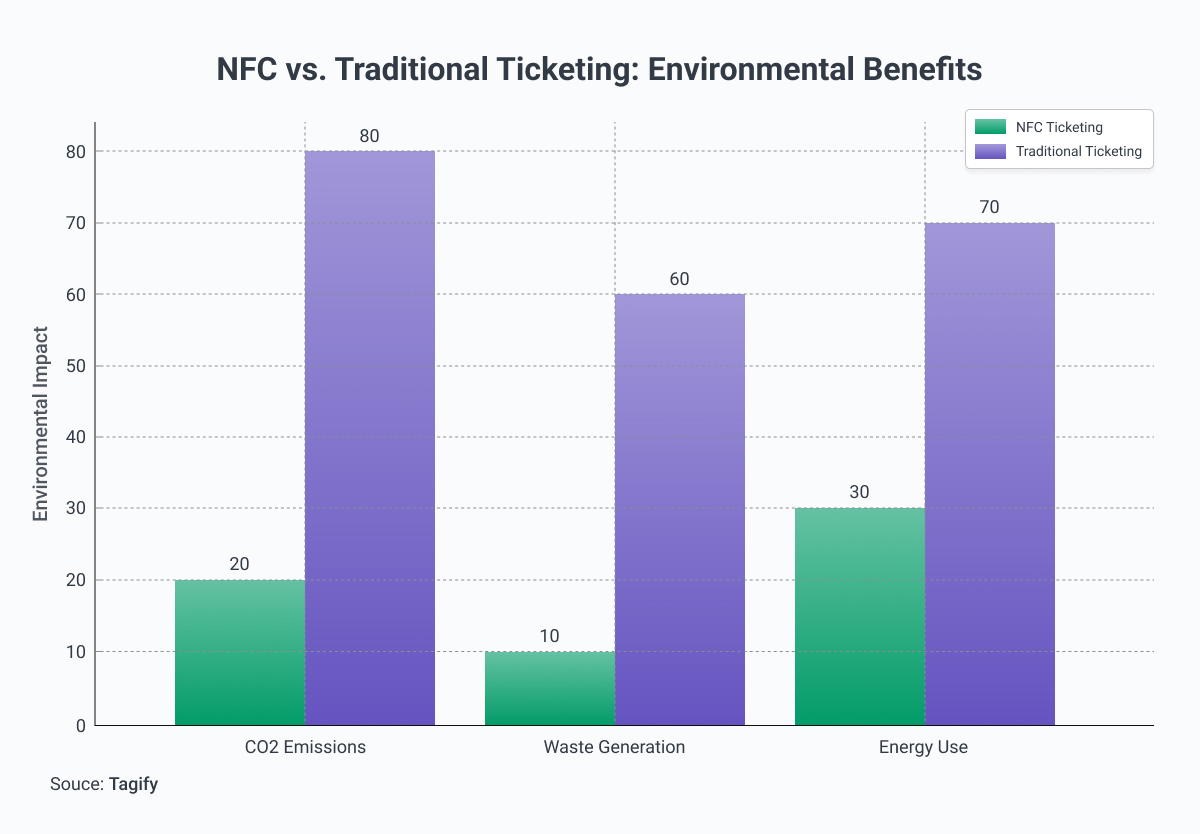
The Future of NFC in Events: Trends and Predictions
The future of NFC in events points towards increasingly immersive and personalized experiences. Here are some major trends shaping the role of NFC in event technology:
-
Enhanced Security Measures
NFC technology is expected to incorporate more advanced security protocols, including biometric authentication, for even more secure and personalized attendee experiences. By combining NFC with facial recognition or fingerprint verification, events can ensure only authorized access while enhancing the convenience of entry. -
IoT Integration for Smarter Event Management
The integration of NFC with the Internet of Things (IoT) is set to create smarter event environments. Through IoT-enabled sensors and devices, NFC tags can interact with the surrounding infrastructure to optimize crowd flow, automate lighting, and enhance safety. For instance, NFC wristbands might communicate with IoT sensors to manage real-time crowd densities, making event management more dynamic and responsive. -
AI and Machine Learning-Driven Insights
Leveraging AI, NFC-collected data can provide event organizers with predictive analytics and valuable insights into attendee behavior, preferences, and engagement patterns. By understanding trends such as peak entry times and popular zones, organizers can adjust event layouts, schedule activities, or send personalized offers that align with attendee interests. -
Augmented Reality (AR) Integration for Immersive Experiences
NFC is anticipated to work alongside augmented reality (AR) to deliver a unique, immersive experience for attendees. By tapping an NFC tag, guests could unlock AR content relevant to the event, such as 3D visuals, interactive maps, or exclusive behind-the-scenes content. This integration creates a new level of engagement, transforming the way fans interact with their environment. -
NFC-Enabled Wearables for Enhanced Interaction
NFC-enabled wearables, such as wristbands and lanyards, are gaining traction as they offer attendees a hands-free experience. These wearables can handle tasks like contactless payments, event access, and in-seat ordering, making the event experience more seamless and interactive. -
Advanced Data Analytics Capabilities
NFC technology will allow organizers to gather even deeper insights into attendee preferences and engagement. By tracking interaction points throughout the event, organizers can personalize experiences in real time, adjust activities based on crowd response, and improve event layouts for future gatherings. -
Sustainable and Eco-Friendly Tagging Solutions
As events adopt greener practices, NFC ticketing offers an eco-friendly solution by reducing the need for physical tickets and minimizing waste. Future developments may also incorporate recyclable NFC materials, supporting sustainability initiatives while streamlining the event experience. -
Predictive Analytics and Decision-Making with AI
Beyond real-time data insights, AI-powered NFC analytics can provide predictive insights for proactive decision-making. For example, predicting crowd peaks or analyzing historical attendee behavior allows organizers to adjust staffing, seating, or concessions, ensuring a smoother event flow. -
Convergence with Biometric Authentication
As security remains paramount, NFC is expected to converge with biometric technologies, providing an additional layer of secure, personalized access. Combining NFC with biometrics like facial or fingerprint recognition could enhance the safety and convenience of the event experience.
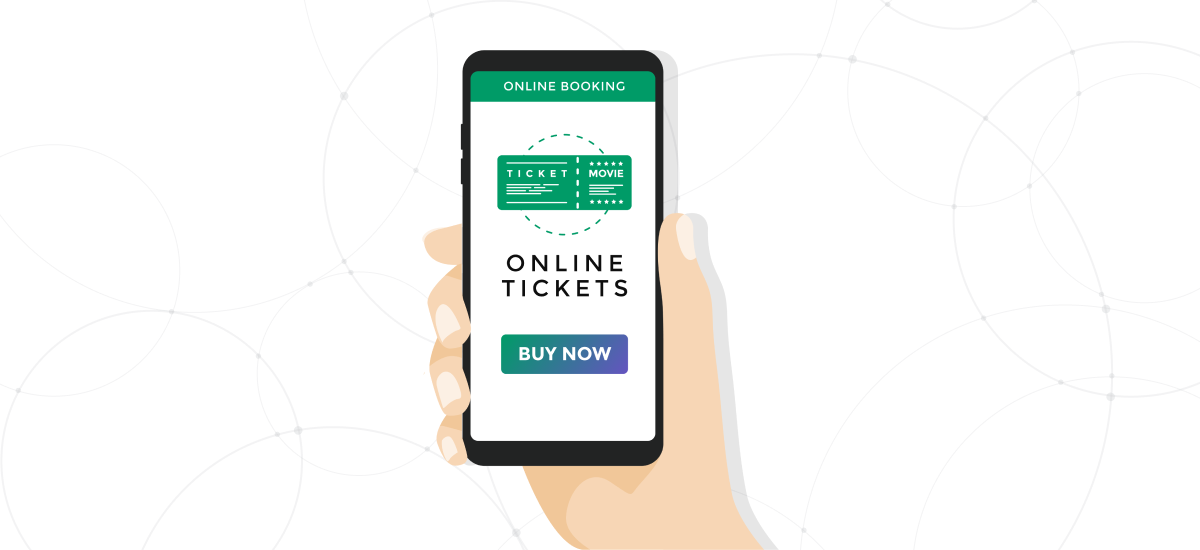
Steps to Implementing Contactless Ticketing
Implementing contactless ticketing technology may seem challenging, but it's a valuable investment for both venues and fans. Here’s how to get started:
-
Research and Select the Right Provider
The first step is thorough research to select a provider that aligns with your organization’s needs. Each contactless ticketing solution offers unique features, so consider compatibility with existing systems, scalability, security, and customer support when making your choice. Softjourn, for example, has extensive experience helping clients transition to NFC-based ticketing systems, ensuring a smooth and secure solution tailored to each venue’s requirements. -
Train Staff on New Systems
Proper staff training is essential to ensure a seamless operation. This includes teaching employees to process contactless tickets at entry points, troubleshoot common issues, and access data collected by the system. -
Communicate with Patrons
Educating fans on how to purchase and use contactless tickets is crucial. Clearly explain the benefits, such as faster entry and added security, as well as any new entry procedures. Effective communication through email, social media, and on-site signage will help ensure a smooth transition. -
Monitor and Evaluate System Performance
Regularly monitor metrics like adoption rates, customer satisfaction, and system uptime to evaluate the system’s effectiveness and identify areas for improvement. Softjourn can assist with ongoing support, helping them optimize their contactless ticketing system over time.

In-House Development vs. Partnering with a Software Development Company
When implementing contactless ticketing, venues face two main options: develop the solution in-house or partner with a software development company.
1. Developing In-House
Developing in-house gives you complete control over the design and can be customized to meet specific needs. However, this option requires significant resources, expertise, and ongoing maintenance, which can burden IT teams. If your team lacks experience or the latest tools, this option may end up being costlier and time-consuming.
- Pros: Full control, tailored design, in-house knowledge retention.
- Cons: Requires substantial resources, access to latest tech may be limited, high maintenance burden.
2. Partnering with a Software Development Company
Partnering with an experienced software provider brings access to the latest technologies, a faster time to market, and reduced strain on internal teams. We recommend choosing a software development partner with experience in designing, developing, and maintaining tailored NFC ticketing solutions.
- Pros: Expertise in the latest technology, quicker rollout, cost-effective, less strain on internal resources.
- Cons: Less direct control, additional maintenance costs, dependency on the provider.

Why Choose Softjourn?
Many organizations benefit from consulting an experienced ticketing advisor who can assess their current systems and provide an external perspective on how to proceed. Softjourn has a proven track record of designing and implementing contactless ticketing solutions for a variety of clients. Our expertise spans NFC technology, industry standards, and secure data handling.
With Softjourn, you’ll gain access to industry-leading technologies and a team that understands the unique needs of ticketing. We’ve developed mobile ticketing applications for both iOS and Android, enabling seamless NFC scanning that operates in any lighting condition, providing flexibility for events at any time of day. These apps can process queues faster than traditional QR codes and include features like checking balances for in-seat ordering and concessions.
By partnering with Softjourn, you’re choosing a reliable ally dedicated to creating a seamless, efficient, and eco-friendly ticketing experience. Join the many companies who trust us to power their NFC ticketing solutions and elevate the fan experience.
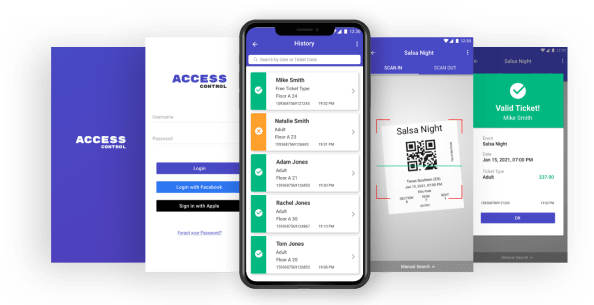
Conclusion
Contactless ticketing offers numerous advantages for venues, event organizers, and attendees alike, from enhanced security and fraud prevention to improved convenience and a seamless entry experience. As NFC technology becomes the new standard, more patrons are expecting the ease and efficiency of digital ticketing.
If you’re ready to explore how NFC ticketing can elevate your ticketing platform or event registration system, reach out to Softjourn today. Our experts are here to guide you in implementing a secure, efficient, and future-proof solution tailored to your needs.
FAQ
1. What is Contactless Ticketing?
Contactless ticketing uses NFC (Near Field Communication) technology to allow attendees to enter events by simply tapping their mobile device or NFC-enabled wearable near a reader. This process replaces traditional paper tickets with digital passes stored in electronic wallets, making entry faster and more convenient.
2. How Does Contactless Ticketing Improve Security?
Contactless tickets are encrypted and can include unique identifiers and tokenization, which make them difficult to duplicate or intercept. Additionally, NFC can work with biometric authentication for added security, reducing risks of counterfeiting and unauthorized entry.
3. What Are the Benefits of NFC in Ticketing?
NFC technology enables faster entry, reduces physical touchpoints, enhances data security, and provides venues with real-time analytics. It also supports eco-friendly practices by eliminating the need for paper tickets.
4. Where is Contactless Ticketing Being Used?
Contactless ticketing is increasingly popular in sports stadiums, concert halls, and large venues worldwide, including places like Allegiant Stadium, SoFi Stadium, and Tokyo National Stadium. Many of these venues have adopted NFC to streamline entry, reduce wait times, and improve fan experiences.
5. How Can Softjourn Help with Contactless Ticketing?
Softjourn has extensive experience designing NFC ticketing solutions for clients. Our expertise includes creating custom mobile ticketing applications and providing ongoing support to ensure your system is efficient, secure, and tailored to your needs.




